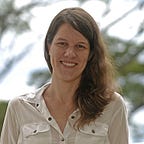Jerrold Zacharias and the “New Physics”
How one MIT physicist sparked a revolution in high school physics classrooms across the United States and the world.
By the time of his retirement as head of MIT’s Laboratory for Nuclear Science in 1955, Jerrold R. Zacharias had amassed a sizeable portfolio of accomplishments. He had developed the first commercial atomic clock, had made advances in radar systems, and was involved in building the first atomic bomb at Los Alamos during World War II. The adoption of atomic time can be traced back to his research, as can the eventual definition of a second — 9,192,631,770 oscillations of a cesium atom. His work left a mark on both national defense and the field of atomic physics. But the man himself touched lives far beyond the scientific community.
When Zacharias died in July 1986, letters of condolence flowed in from around the world. His wife, Leona Zacharias, received emotional, pages-long missives on stately letterhead from friends and colleagues who had either heard of his death on the radio or read about it in the pages of the New York Times.
These letters, stored at the MIT archives, recall a quick-witted, outspoken man who not only saw problems clearly but did something about them. Dozens of voices tell the stories of the careers he had influenced and the changes he sparked.
“How could he do so much, for so many people, and even for the whole world?” asked mathematician Robert Davis in fragmented black script that continues for four pages. “Maybe he was the uniquely right person for that historical moment, when science profoundly confronted history and culture.”
The memories shared within these letters of Zacharias’ work in physics and defense, however, are consistently outshined by remarks on the project he took on later in life: reforming science education. In 1956, Zacharias had formed the Physical Science Study Committee (PSSC), a group of scholars, physicists, teachers and motion picture directors dedicated to improving the way physics was taught in secondary schools. The project was supported by the Eisenhower Administration and backed by the National Science Foundation. Some scholars view this governmental support as stemming directly from Cold War fears and the tension of the Space Race, but science historian John L. Rudolph argues that Zacharias and his colleagues were motivated primarily by the increasing “irrationalism and suspicion” of the general public toward science.
The PSSC was housed at MIT and aimed to bring students into science by letting them discover basic concepts through direct experimentation; the underlying goal was to create active thinkers. The program developed a new, integrated physics curriculum, which involved science textbooks, lab equipment for in-class experiments, teaching guides, and films (starring scientists, not actors). Teaching itself was a core part of the program. Believing that schools were set up “to produce a sea of uniform mice,” Zacharias reasoned that students were brighter than they were given credit for. He pushed for students to learn by teaching each other and built a curriculum that introduced graduate-level physics concepts into high school classrooms. He was quoted widely in the press — including in a 1965 issue of Sports Illustrated — saying, “For a physics teacher, if you give me my pick between a football coach who really likes kids and a stuffed owl with a Ph.D, I’ll take the football coaches every time. They care, and they’ll learn as they go.”
In a letter to Leona Zacharias, educator Melanie Barron recounted happy memories of the couple, and her own struggles teaching science majors how to teach. “I teach science majors, both graduates and undergraduates here at Stony Brook,” she wrote. “I can just hear Zach saying you can’t teach someone how to teach — and he’s right — but I do try to let them know some things of value about teaching and learning, and Zach played a big part in my life which helps guide how I teach.”
The methods and materials of the PSSC spread widely in the United States and in a matter of years at least thirty percent of physics students were enrolled in the course. Eventually this new approach had an impact on other subjects, as well as college curricula; students were arriving at college with more advanced knowledge than in previous years. “I remember returning from Tuskegee Institute and telling Zach about all the PSSC equipment in use down there,” recalled physicist Edwin Taylor in his letter of condolence. “‘Having done that,’ I said, ‘you have done your bit. Now you can stay home and drink whiskey.’ ‘I try not to drink whiskey,’ he replied.”
Indeed, Zacharias’ educational fervor didn’t end with the PSSC. He also established Educational Services, Inc., which worked to create an elementary school science program and now operates globally under a broader mission. His discussions about the problems of science education in Africa contributed to the eventual founding of the Science Education Program for Africa.
While the PSSC paved the way for science education reform in the United States and abroad, the program itself eventually faded away. As funding ran out, teacher trainings ceased and schools abandoned the elaborate curriculum. It was estimated that only four percent of school districts were still using the curriculum by 1980. Undeterred, Zacharias spoke of starting a new reform effort, but it never came to pass.
Photo credits: First photo by Ricky Leacock with permission from Valerie Lalonde. Second photo courtesy of MIT Museum.
